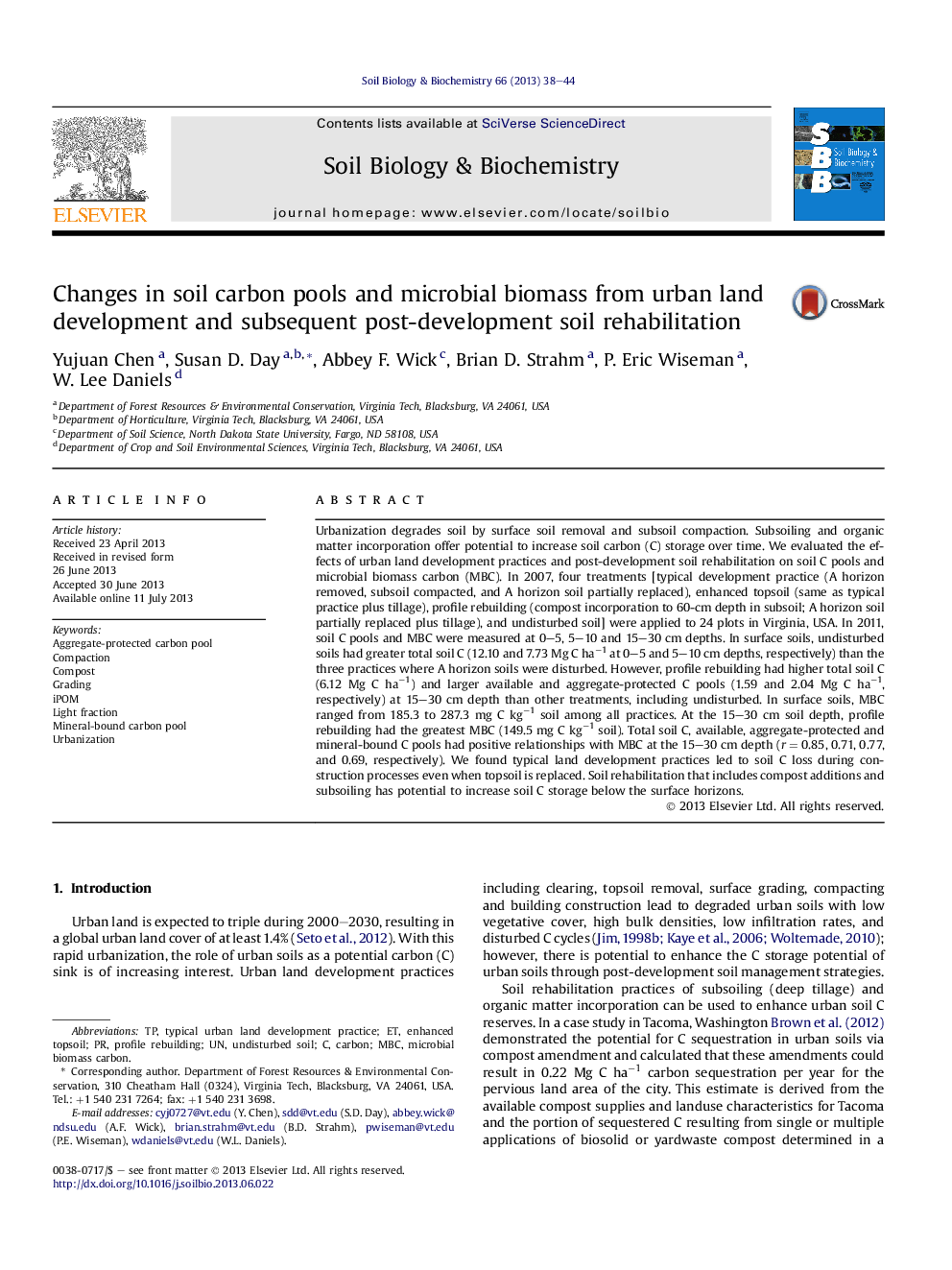| کد مقاله | کد نشریه | سال انتشار | مقاله انگلیسی | نسخه تمام متن |
|---|---|---|---|---|
| 2024679 | 1542618 | 2013 | 7 صفحه PDF | دانلود رایگان |

• Urban land development released mineral-bound soil carbon.
• Soil rehabilitation increased aggregate-protected carbon in subsurface soils.
• Microbial biomass carbon was positively associated with aggregate-protected carbon.
Urbanization degrades soil by surface soil removal and subsoil compaction. Subsoiling and organic matter incorporation offer potential to increase soil carbon (C) storage over time. We evaluated the effects of urban land development practices and post-development soil rehabilitation on soil C pools and microbial biomass carbon (MBC). In 2007, four treatments [typical development practice (A horizon removed, subsoil compacted, and A horizon soil partially replaced), enhanced topsoil (same as typical practice plus tillage), profile rebuilding (compost incorporation to 60-cm depth in subsoil; A horizon soil partially replaced plus tillage), and undisturbed soil] were applied to 24 plots in Virginia, USA. In 2011, soil C pools and MBC were measured at 0–5, 5–10 and 15–30 cm depths. In surface soils, undisturbed soils had greater total soil C (12.10 and 7.73 Mg C ha−1 at 0–5 and 5–10 cm depths, respectively) than the three practices where A horizon soils were disturbed. However, profile rebuilding had higher total soil C (6.12 Mg C ha−1) and larger available and aggregate-protected C pools (1.59 and 2.04 Mg C ha−1, respectively) at 15–30 cm depth than other treatments, including undisturbed. In surface soils, MBC ranged from 185.3 to 287.3 mg C kg−1 soil among all practices. At the 15–30 cm soil depth, profile rebuilding had the greatest MBC (149.5 mg C kg−1 soil). Total soil C, available, aggregate-protected and mineral-bound C pools had positive relationships with MBC at the 15–30 cm depth (r = 0.85, 0.71, 0.77, and 0.69, respectively). We found typical land development practices led to soil C loss during construction processes even when topsoil is replaced. Soil rehabilitation that includes compost additions and subsoiling has potential to increase soil C storage below the surface horizons.
Journal: Soil Biology and Biochemistry - Volume 66, November 2013, Pages 38–44